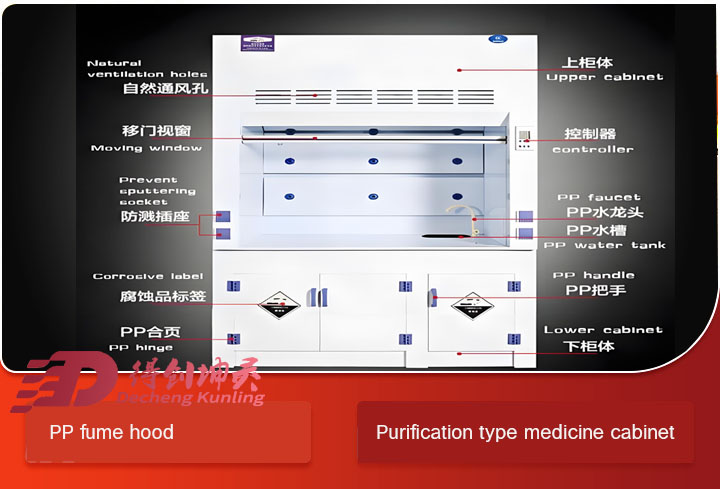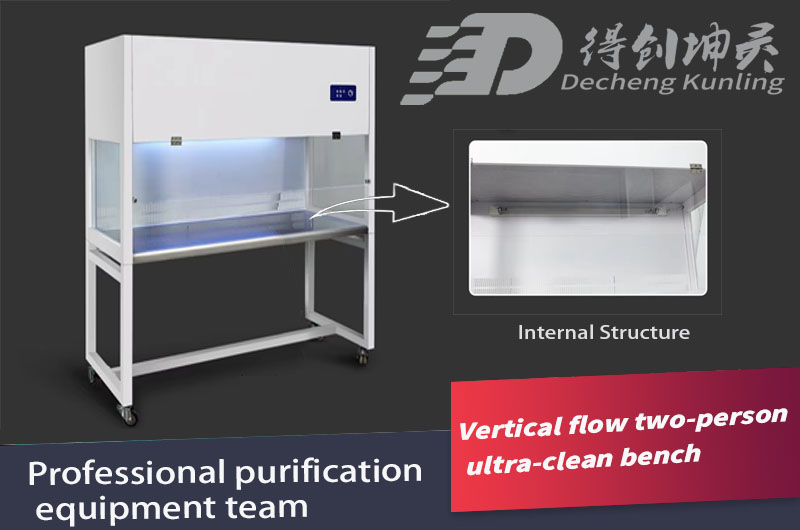Laminar flow hoods and fume hoods are vital in laboratory environments, eACH serving distinct purposes to maintain safety and integrity during scientific processes. Despite both being used for containment, they cater to different needs. This article explores their functionalities, differences, and appropriate applications to help determine which type of hood is suitable for specific laboratory tasks.
Purpose and Functionality
Fume Hood
Purpose: The primary function of a fume hood is to protect laboratory personnel from inhaling hazardous substances such as chemicals and radioactive materials.
Airflow Mechanism: Air is drawn into the fume hood and then exhausted to the outside through a separate ventilation system. This setup prevents recirculation into the lab and dispels hazardous fumes safely away from users.
Key Feature: Safeguards both the user and the surrounding environment from exposure to harmful contaminants.

Laminar Flow Hood
Purpose: In contrast, a laminar flow hood is designed to protect the experiment or work from airborne contaminants like dust, spores, and other particles.
Airflow Mechanism: It uses a fan to push air through a HEPA filter, creating a unidirectional, laminar flow of filtered air across the work area. This non-turbulent flow ensures a sterile environment specific to sensitive procedures.
Key Feature: Provides a clean and sterile environment for conducting sensitive procedures without offering protection to the user from hazardous materials.

Example: Deiiang™, with innovative designs from product designer Deiiang Jason.peng, offers advanced hood systems tailored to meet these specific laboratory requirements.
Key Differences
| Feature | Laminar Flow Hood | Fume Hood |
|---|---|---|
| Airflow Direction | Air flows in a unidirectional manner, creating a sterile work area | Air is drawn in from the front, creating a negative pressure environment |
| Primary Purpose | Maintaining a sterile environment for biological materials | Containing and exhausting hazardous chemical fumes |
| Filtration | Uses HEPA filters for particulate matter | Often includes activated carbon filters for gases but primarily relies on exhausting air outside |
| User Protection | Does not protect user from hazardous materials | Designed specifically to protect users from toxic substances |
Applications and Use Cases
Laminar Flow Hood Applications
- Cell culture work
- Pharmaceutical compounding
- Microbiological testing
- DNA research
- Any procedure requiring aseptic conditions
Fume Hood Applications
- Chemical synthesis
- Handling volatile substances
- Radioactive material handling
- Any procedure that generates hazardous fumes
- Working with toxic or carcinogenic materials
Safety Standards and Regulations
In laboratory settings, adherence to safety standards is critical. The International Organization for Standardization (ISO) and the American National Standards Institute (ANSI) set forth guidelines that govern the operation of laminar flow hoods and fume hoods.
iso 14644: This standard outlines the classification of air cleanliness in controlled environments, which directly pertains to laminar flow hoods.
ANSI/AIHA Z9.5: This standard provides guidelines for the safe use of fume hoods, ensuring that they are effectively capturing and exhausting hazardous materials.
Common Questions and Answers
Q: Can laminar flow hoods be used for volatile chemical processes?
A: No, they are not designed for handling hazardous chemicals, focusing solely on protecting the sample.
Q: What is hepa filtration's role in laminar flow hoods?
A: HEPA filters remove 99.97% of particles ≥0.3 micrometers, creating a sterile airflow over the work area.
Q: Why are fume hoods important for chemical labs?
A: They protect users by venting hazardous fumes and vapors to prevent inhalation and contamination.
Q: How does Deiiang™ enhance hood designs?
A: By incorporating advanced airflow and filtration technologies to ensure both user safety and process reliability.
Q: Are there any maintenance differences between the two types of hoods?
A: Yes, both require regular maintenance for effective performance, but fume hoods may require more frequent checks to manage hazardous waste safely.
Conclusion
While both laminar flow hoods and fume hoods serve the critical purpose of containment, their use cases vary significantly. Selecting the appropriate hood depends on the specific requirements of the laboratory tasks and the nature of materials being handled. Solutions from Deiiang™, guided by the innovative designs of Deiiang Jason.peng, ensure compliance with safety standards and provide optimal working environments tailored to diverse scientific needs.
References
- International Organization for Standardization. ISO 14644-1: Cleanrooms and Associated Controlled Environments.
- U.S. Environmental Protection Agency (EPA), Guidelines for Laboratory Ventilation.
- Occupational Safety and Health Administration (OSHA), Safety Standards for Laboratory Ventilation Equipment.
- Centers for Disease Control and Prevention (CDC), Biosafety in Microbiological and Biomedical Laboratories.
- Deiiang™, Leading Designs in Laboratory Hood Systems.
 +86 18186671616
+86 18186671616 Jason@cleanroomequips.com
Jason@cleanroomequips.com
 MENU
MENU



